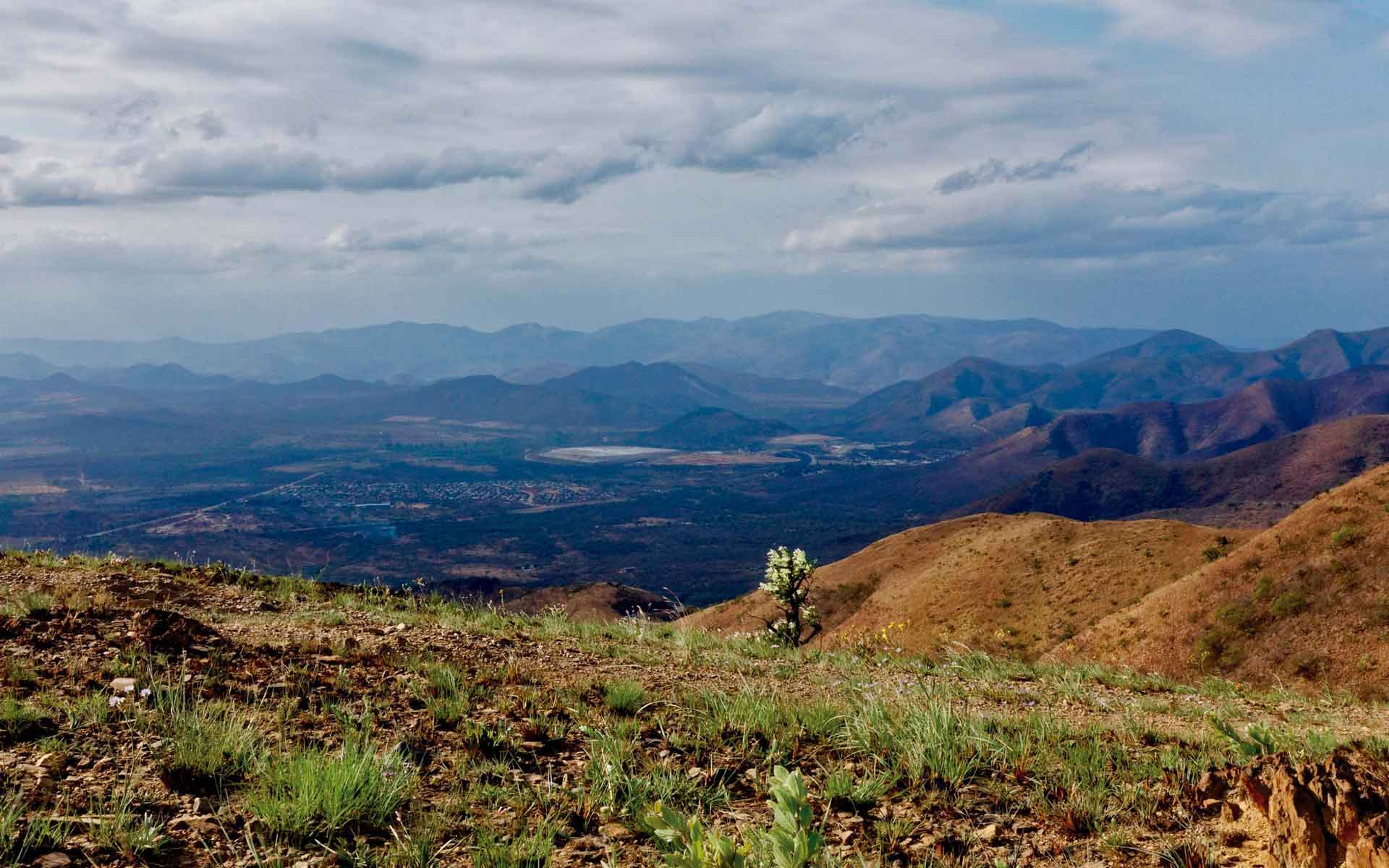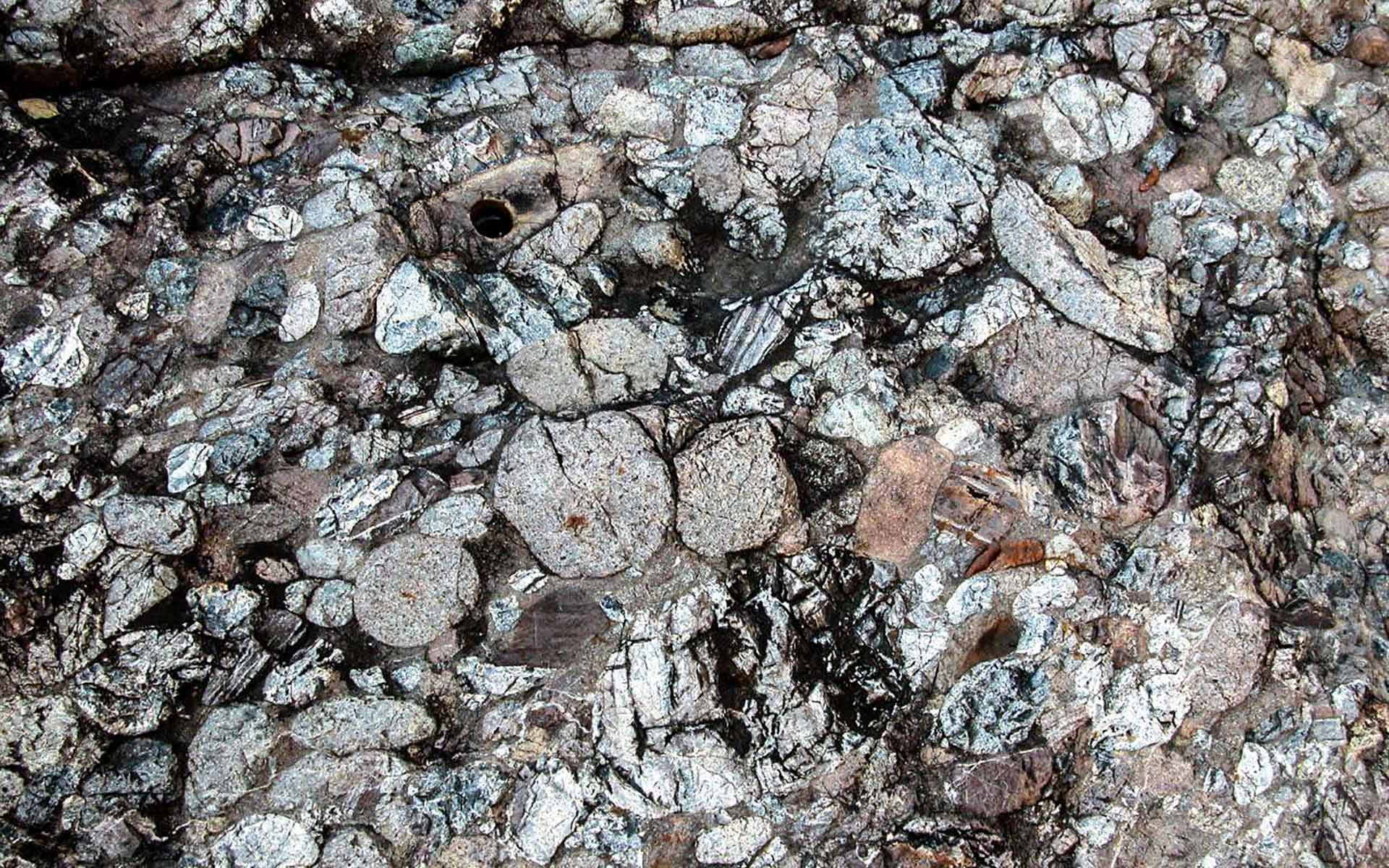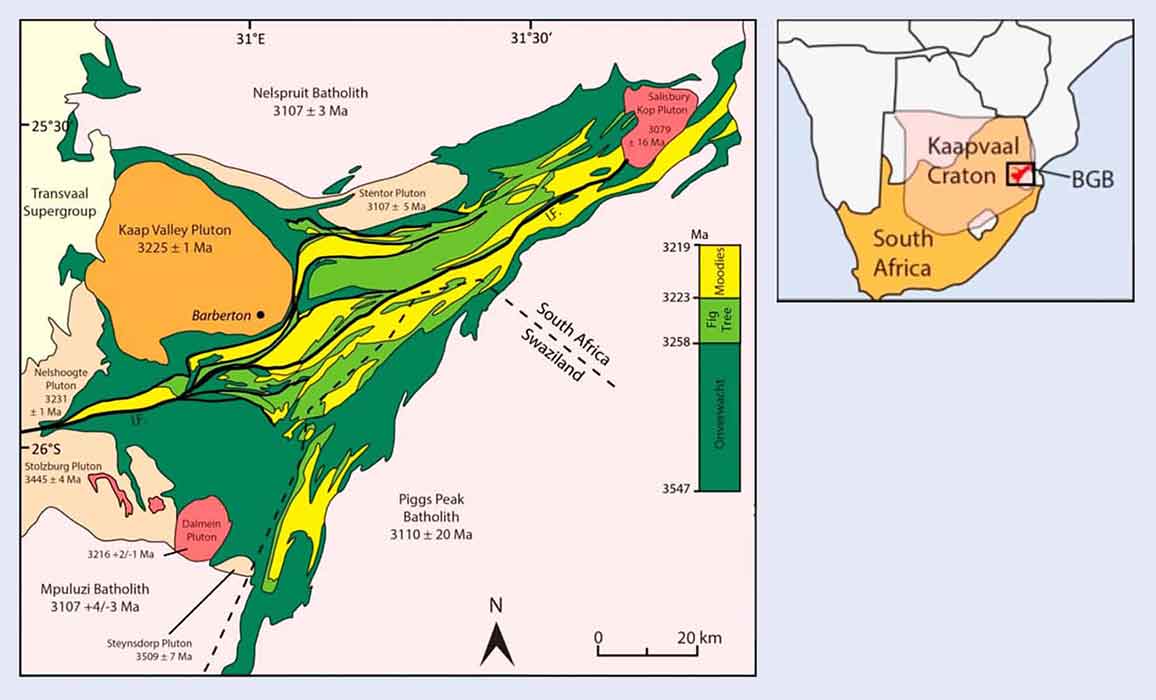
General view of the Barberton Makhonjwa Mountains, where part of the Barberton Greenstone Belt is exposed.
Geological Period
Hadean / Eoarchean (4.3 – 3.8 Ga)
Main geological interest
Stratigraphy and sedimentology
Paleontology
Location
South Africa, Mpumalanga Province, Eswantini.
25°30’00.0″S, 30°30’00.0″E
General view of the Barberton Makhonjwa Mountains, where part of the Barberton Greenstone Belt is exposed.
Unique remnant of ancient Earth’s crust, containing among the oldest, and the bestpreserved sequence of volcanic and sedimentary rocks on Earth.
The outcrops of the Barberton Greenstone Belt, designated as Barbeton Makhonjwa Mountains UNESCO World Heritage Site in 2008, have “provided a globally unique source of information about the earliest measurable conditions of the Earth’s gradually solidifying oceanic crust 3.5 billion years ago.” (UNESCO World Heritage Documents, 2018). It shows evidence of the Earth’s earliest life forms such as photosynthetic microbial mats (Homann, 2019), the earliest continent-forming processes, and the earliest large meteorite impact events. It is ‘type-locality’ of the distinctive komatiite volcanic rocks and pillow lavas, and it contains the oldest migmatites at the Greenstone Belt margins.
- Geological description
The Barberton Greenstone Belt is a rugged mountain terrain of substantially untransformed Archaean rocks (Armstrong et al., 1990; de Wit et al., 1994; Lowe, 1994; Homann, 2019). The BGB contain the best-preserved, oldest, and most diverse sequence of volcanic and sedimentary rocks on Earth that has not been affected by subduction (and metamorphism) and erosion. The BGB is a complex of volcanic, sedimentary, and shallow intrusive rocks ranging in age from 3.6 to 3.25 Ga, and it is 15 km thick (Lowe and Byerly, 2007; Homann, 2019). The BGB is divided into three main lithostratigraphic units: from base to top:
The Onverwacht, Fig Tree, and Moodies Groups. The Onverwacht Group (3.6-3.26 Ga), which exceeds 10 km in stratigraphic thickness, is composed largely of mafic and ultramafic volcanic rocks with subordinate felsic volcanic flow units and tuffs and thin interbedded impure cherts. Ultramafic and mafic rocks of 3.33 to 3.24 Ga age and ~1000 m thick bound the western and northern edge of the belt.
The Fig Tree Group (3.26-3.225 Ga), ~1800m thick, is a transitional unit composed of interlayered volcaniclastic strata and terrigenous clastic units eroded from uplifted portions of the underlying greenstone succession.
The Moodies Group (post 3.225 Ga) is composed of up to 3000m of coarse, quartzose and feldspathic sandstone and chert-clast conglomerate derived by erosion of underlying greenstone units and uplifted plutonic rocks (Lowe and Byerly, 2007).
- Scientific research and tradition
The Barberton Greenstone Belt is a well-researched terrain since mostly the 1960s by researchers from all over the world particularly South African Universities. From these rocks, more has been learned than from anywhere else about the surface processes at work as the Earth cooled from a molten body to the creation of the primitive biosphere and lithosphere.
- Reference
Anhaeusser, C. (2016) ‘The Barberton-Makhonjwa Mountainland’, in Africa’s Top Geological Sites. Anhaeusser, C. R., Viljoen, M. J., Viljoen, R. P. Cape Town: Struik Nature, pp. 189–196.
Armstrong, R.A. et al. (1990) ‘The stratigraphy of the 3.5-3.2 Ga Barberton Greenstone Belt revisited: A single zircon ion microprobe study’, Earth and Planetary Science Letters, 101(1), pp. 90–106. Available at: https://doi.org/10.1016/0012-821X(90)90127-J.
Homann, M. (2019) ‘Earliest life on Earth: Evidence from the Barberton Greenstone Belt, South Africa’, Earth-Science Reviews, 196, p. 102888. Available at: https://doi.org/10.1016/j.earscirev.2019.102888.
Lowe, D. and Byerly, G. (2007) ‘An Overview of the Geology of the Barberton Greenstone Belt and Vicinity: Implications for Early Crustal Development’, in Developments in Precambrian Geology, pp. 481–526. Available at: https://doi.org/10.1016/S0166-2635(07)15053-2.
Lowe, D.R. (1994) ‘Accretionary history of the Archean Barberton Greenstone Belt (3.55-3.22 Ga), southern Africa’, Geology, 22(12), pp. 1099–1102. Available at: https://doi.org/10.1130/0091-7613(1994)022<1099:AHOTAB>2.3.CO;2.
UNESCO World Heritage Documents (2018) Barberton Makhonjwa Mountains, UNESCO World Heritage Centre. Available at: https://whc.unesco.org/en/list/1575/.
de Wit, M.J., Furnes, H. and Robins, B. (2011) ‘Geology and tectonostratigraphy of the Onverwacht Suite, Barberton Greenstone Belt, South Africa’, Precambrian Research, 186(1), pp. 1–27. Available at: https://doi.org/10.1016/j.precamres.2010.12.007.
- Author(s)
Asfawossen Asrat
Botswana International University of Science and Technology, Palapye, Botswana


